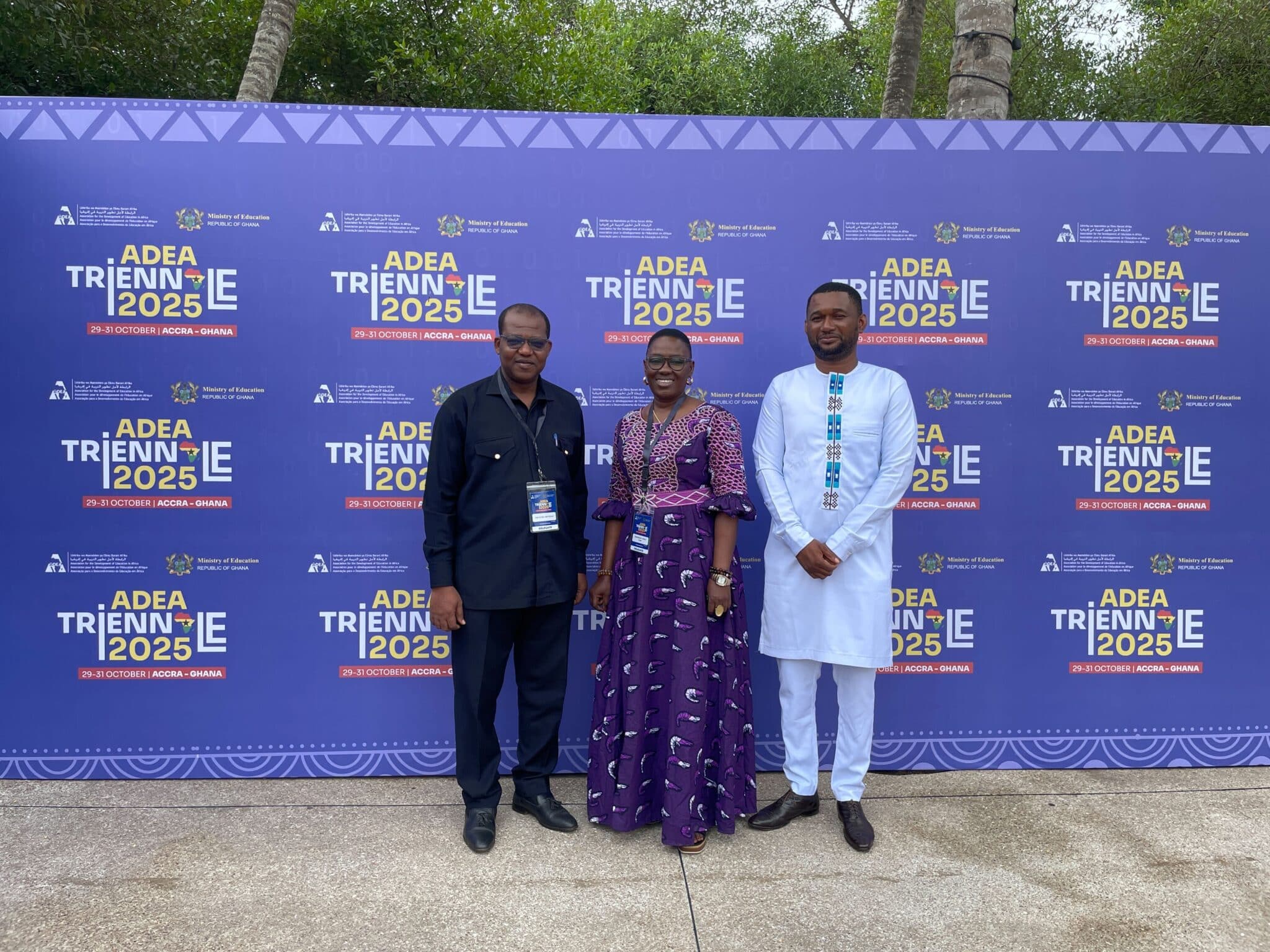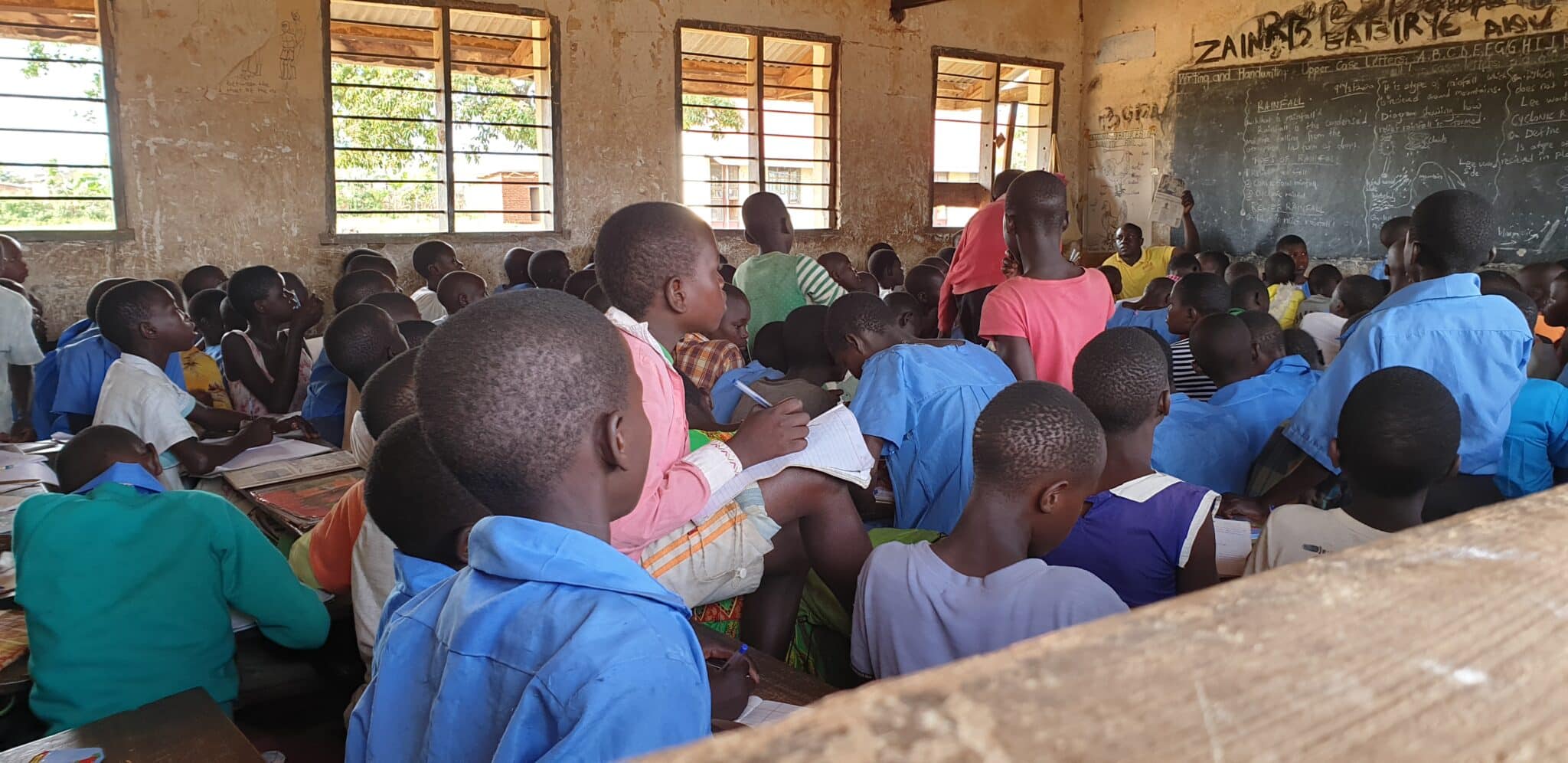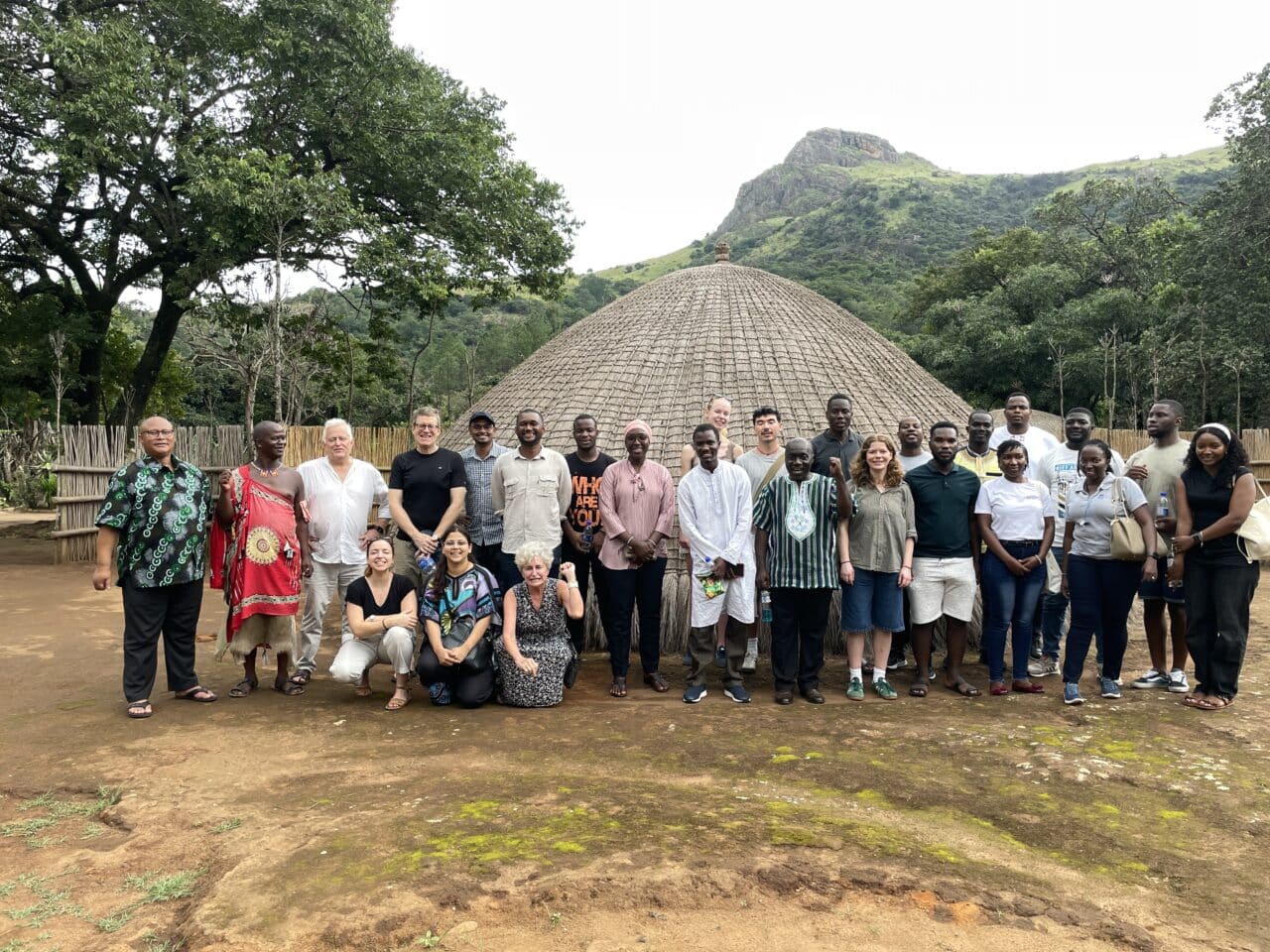
South-South Collaboration for Stronger Education Systems: Lessons Learned from Cross-Country Learning Exchange and Knowledge Sharing
In February 2025, education leaders from The Gambia, Sierra Leone, and Eswatini joined forces in Eswatini for a cross-country learning exchange on education data systems. Hosted under the GPE KIX initiative, this event focused on advancing learner-centered EMIS models, strengthening data use, and sharing innovations across borders. From digital transformation to inclusive policies, the visit offered insights into how countries can collaborate to build smarter, more equitable education systems.
In February 2025, a unique cross-country learning exchange brought together education leaders and education management information system (EMIS) specialists from The Gambia, Sierra Leone, and Eswatini, alongside University of Oslo researchers. Hosted in Eswatini, this visit was part of the Global Partnership for Education Knowledge and Innovation Exchange (GPE KIX) knowledge mobilization strategy, aiming to accelerate the adoption of learner-centered EMIS models, strengthen data-driven decision-making, and foster long-term capacity building.
This article highlights the key lessons, knowledge exchange, and cross-country learning that emerged from this collaborative experience.
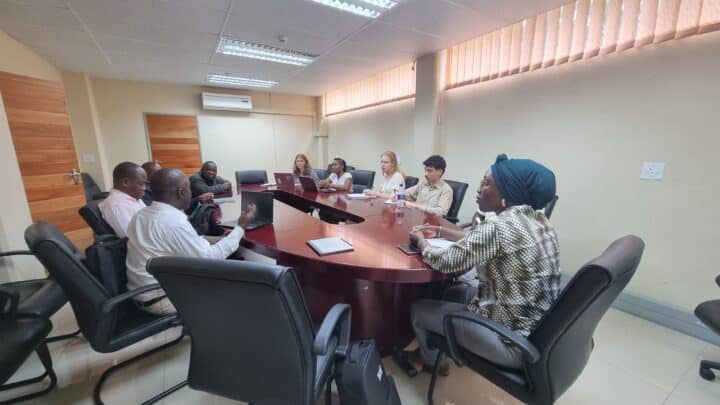
Why Cross-Country Learning Matters
Education systems worldwide face similar challenges: ensuring data quality, making informed decisions, and supporting every learner. By sharing experiences and innovations across borders, countries can avoid reinventing the wheel, adapt proven solutions, and build stronger, more resilient systems.
As part of the GPE KIX knowledge mobilization strategy, Ministries of Education from The Gambia, Sierra Leone, and Eswatini participated in a cross-country exchange to advance learner-centered EMIS models, data use, capacity building, and partnerships. Eswatini showcased its PIN-driven EMIS, offering practical insights for The Gambia and Sierra Leone as they develop similar systems across sectors. While The Gambia and Eswatini are transitioning to individual-level data and Sierra Leone is exploring options, the visit enabled sharing of strategies, implementation approaches, and supporting structures.
The involvement of master’s students enriched SEMIS (school/staff/student education management information system) development and informed ongoing research, ensuring practical impact. The visit also highlighted the importance of partnerships, interdepartmental collaboration, and capacity building, with Eswatini’s experience providing valuable lessons.
Key discussions included information technology adoption, data-sharing, and staff development. Knowledge exchange on policies, data dissemination, and feedback mechanisms will help refine EMIS and promote data-driven decision-making. Notably, Sierra Leone’s completion of an EMIS policy offered a foundation for future cross-country learning.
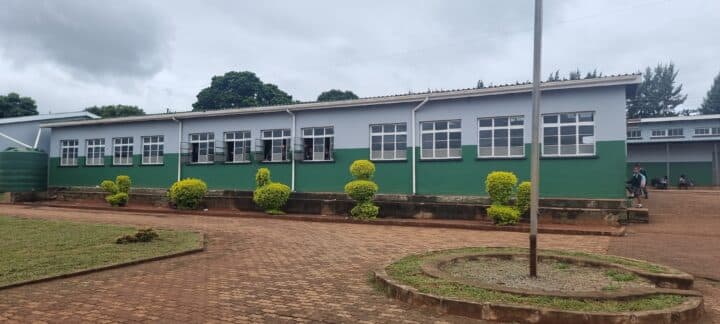
About the Countries
Eswatini has reformed its education data landscape by moving from a paper-based EMIS to a fully digital, personal identity number (PIN) driven system using DHIS2-EMIS, a free and open-source web-based tool for education data management. Since its national launch in March 2024, the system now covers all 976 primary and secondary schools, streamlining data management and enabling real-time access for planning and budgeting. The introduction of individual-level student and staff tracking has begun to strengthen student retention and teacher management interventions while policies support re-enrollment for learners affected by teenage pregnancy and gender-based violence.
The Gambia’s Ministry of Basic and Secondary Education has made significant strides in transforming education management. By integrating individual-level data for learners and teachers, The Gambia is enhancing data-driven decision-making and improving planning across the sector. Innovations such as digital school report cards and attendance tracking are increasing community feedback and data use at the school level, while targeted reforms aim to better monitor and support marginalized groups.
Sierra Leone is initiating a comprehensive approach to education data by piloting DHIS2 in two districts and integrating multiple data systems into a national warehouse. With foundational learning at the heart of its 2022-2026 Education Sector Plan, Sierra Leone is committed to ensuring that every child can read fluently and master basic mathematics by class 4. The country’s newly drafted EMIS policy, digital Master Schools List, and innovative ‘Situation Room’ call centre are setting new standards for data-driven decision-making and rapid response to educational challenges.

Data in Action
During the exchange visit, various Eswatini MoET departments shared their diverse use cases for EMIS data with the visiting delegation.
“The EMIS data is so reliable and when you quote that you have referenced the EMIS data, you are sure that that reference is authentic and anyone can access it.” EMIS focal point – Guidance and Counseling department
Planning: The MoET planning department has used EMIS data to inform policy revisions, allocation of resources for school infrastructure, budgeting and paying grants for the Free Primary Education (FPE), Orphan and Vulnerable Children (OVC) and Special Needs Learners and planning for influx of learners to the secondary level.
Allocation of School Grants: The FPE unit asserted that the EMIS data had informed allocation of FPE grants to the Swazi nationals in government primary schools. The grant was introduced in 2010 where for example each child in grade 1 and 2 was entitled to 560 Emalangeni. In 2024, the grant was revised upwards by a 20% increment to 672 Emalangeni (36 USD) per child per year. The grant is used by the school for school feeding, school maintenance, practical subjects, salaries for non-teaching staff, utilities and learning materials such as chalk.
“No PIN, No Grant” Whereas the current EMIS data provides aggregate enrolment numbers of learners entitled to the FPE grant, the FPE unit indicated that schools still have to fill in manual claim forms of individuals learners and their personal identity numbers, which are then submitted to the accounts department at the regional office for validation of the learner PIN against information from the Home Affairs department. With the ongoing roll out of SEMIS, it is envisaged that this process will be automated and avert the delays in payment of the FPE grants to schools.
Advocacy: The EMIS data has enabled organizations such as SWANCEFA – an advocacy civil society coalition group – to access data which they have used to advocate for education sector financing and engagement of schools and parents to improve access to education and learning outcomes. Using funds from the closed call proposal; SWANCEFA has conducted community sensitization on the relevance and use of education data to improve quality of education.
“Previously, by the time the MoET generated and shared the annual education census report, it was more than 2 years old. Planning using old data was a challenge because the education landscape is always changing. But with the new EMIS, we have more access to up-to-date data. This has made our lives much easier; we can access the system by ourselves and don’t have to rely on the EMIS Unit to provide us with data.” Director, SWANCEFA
“We have been able to engage with the schools on the performance of their education indicators. For instance, using the data, I was able to compare dropout rates for different schools and together with the schools, we planned community engagement programmes for our parents to address the high dropout rates” – Director, SWANCEFA
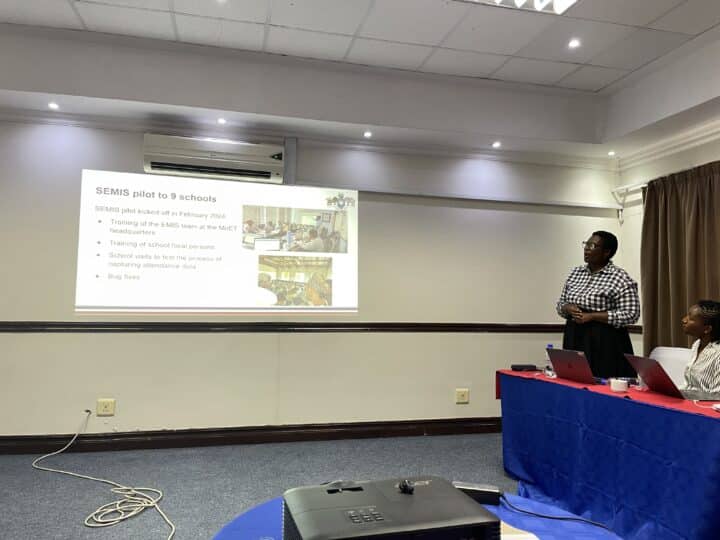
Key Lessons and Insights
1. Moving Towards Learner-Centered EMIS
- Eswatini’s Journey: Eswatini transitioned from a paper-based system to a digital, PIN-driven EMIS (DHIS2-EMIS), enabling real-time data capture and use across all 976 primary and secondary schools.
- Gambia’s Innovation: MoBSE The Gambia is enhancing its EMIS by incorporating individual-level data for learners and teachers, improving monitoring and planning.
- Sierra Leone’s Exploration: Sierra Leone is exploring the piloting individual-level data in selected schools and integrating various systems (EMIS, TMIS, Quality Assurance) into a national data warehouse.
Lesson: Digital EMIS platforms like DHIS2 are flexible and customizable to country needs, making data accessible and actionable at all levels. However, successful adoption requires strong policy, capacity building, and stakeholder buy-in.
2. The Power of Partnerships
- Eswatini’s Model: MoET Eswatini leveraged partnerships with UNICEF and other stakeholders to support EMIS development and scaling.
- Gambia’s Approach: Success in staff recruitment, motivation, and retention within the EMIS unit was noted as a best practice for others.
Lesson: Building and sustaining effective EMIS requires not just technology, but also strong partnerships and staff retention strategies—across government sectors and with development partners.
3. Capacity Building and Change Management
- Upskilling Staff: As systems digitalize, roles evolve. Eswatini faces the challenge of retraining former data capturers for new roles in data analysis and validation.
- Knowledge Transfer: Including master’s and PhD students in the exchange enriched the learning process, ensuring research informs practice.
Lesson: Investing in people—training, mentoring, and succession planning—is as important as investing in technology.
4. Policy, Data Use, and Feedback Loops
- Sierra Leone’s Policy Leadership: Sierra Leone completed a comprehensive EMIS policy, offering a template for others.
- Feedback Mechanisms: Innovations like school report cards and community feedback channels in The Gambia are improving data use at the local level.
Lesson: Clear policies and robust feedback mechanisms ensure data is not just collected, but actually used to improve education outcomes.
5. Addressing Social Challenges
- Gender and Inclusion: Both Eswatini and Sierra Leone have policies to support re-enrollment of learners affected by teenage pregnancy and to respond to gender-based violence.
- Community Engagement: Public campaigns and toll-free lines are used to raise awareness and support vulnerable learners.
Lesson: EMIS can support broader social goals—like inclusion and protection—when integrated with responsive policies and community engagement.
Cross-Country Learning in Action
During the exchange, teams visited schools, engaged with EMIS units, and participated in strategy bootcamps. They shared:
- Implementation strategies for individual-level data systems
- Approaches to staff recruitment and retention
- Experiences with policy development and harmonization
- Innovations in data dissemination and use
This hands-on, peer-to-peer learning fostered trust, sparked new ideas, and laid the groundwork for ongoing collaboration.
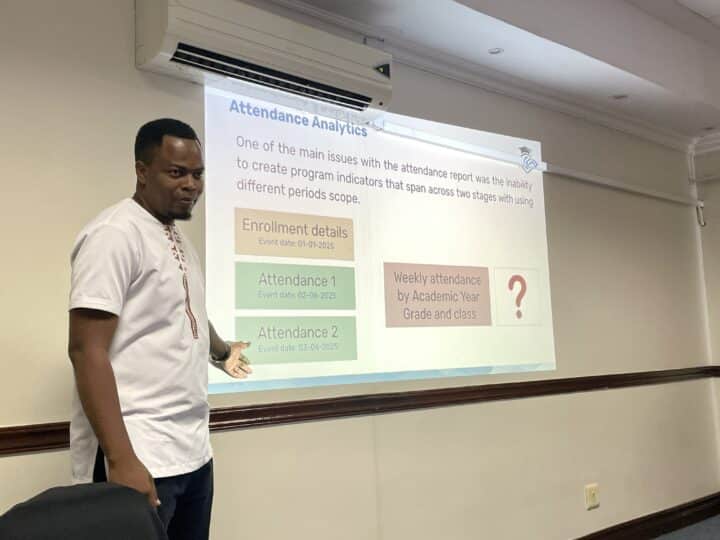
What’s Next? Sustaining the Momentum
- Continuous Collaboration: The exchange highlighted the value of ongoing dialogue—through communities of practice, joint research, and regular knowledge sharing.
- Scaling Innovations: Lessons from Eswatini and The Gambia’s SEMIS pilots will inform broader adoption in Sierra Leone and beyond.
- Policy Harmonization: Developing shared standards and policies will help countries align efforts and accelerate impact.
Conclusion
The cross-country learning exchange between The Gambia, Sierra Leone, and Eswatini demonstrates the transformative power of knowledge sharing. By learning from each other’s successes and challenges, these countries are building stronger, more responsive education systems—ensuring that every learner is counted, supported, and empowered to succeed.
Let’s keep the conversation going!
What lessons can your country share? What challenges are you facing in EMIS or education data use? Join the dialogue and help shape the future of education together.
